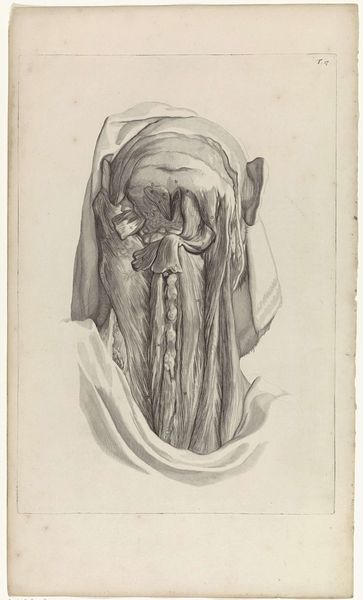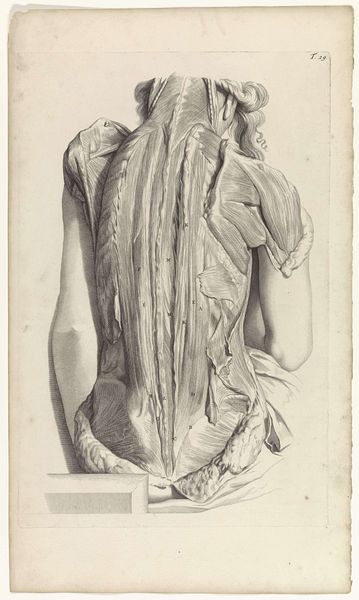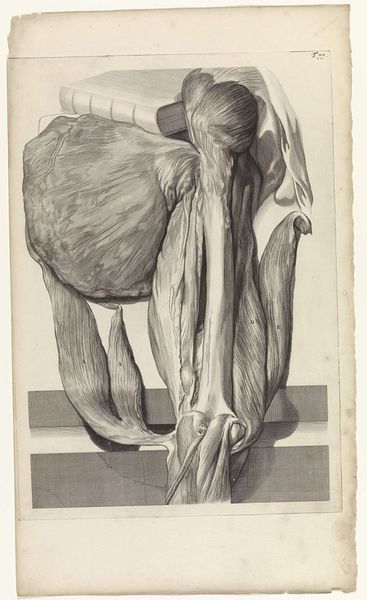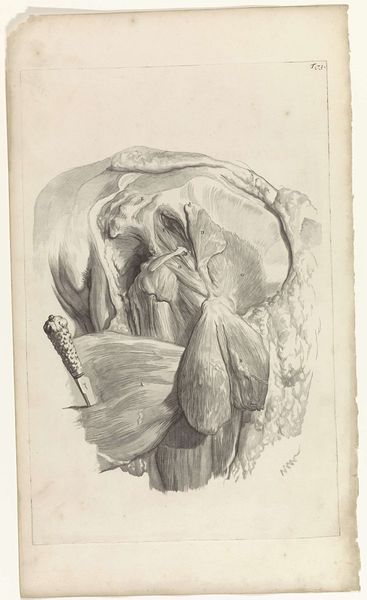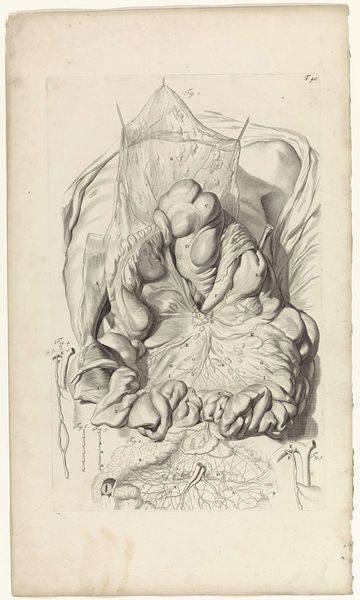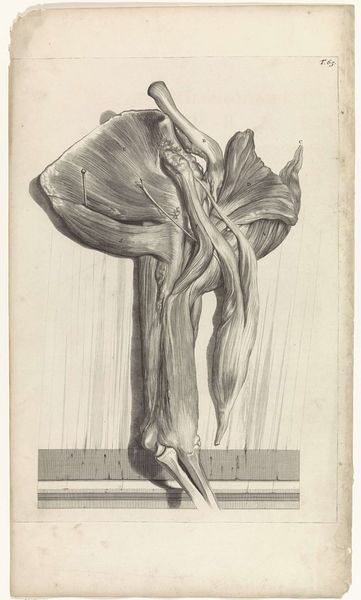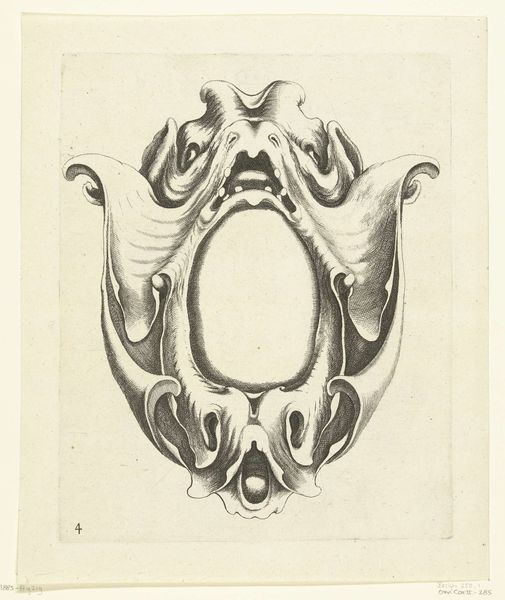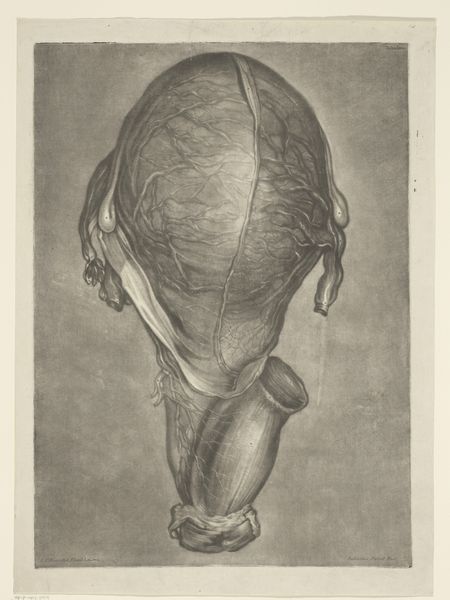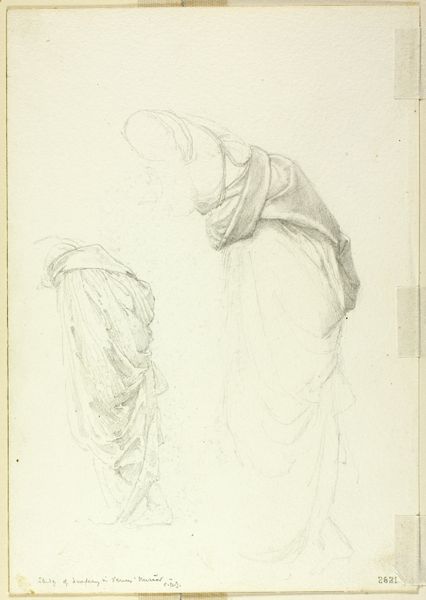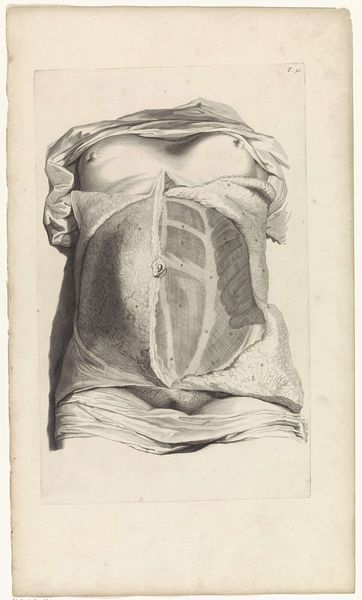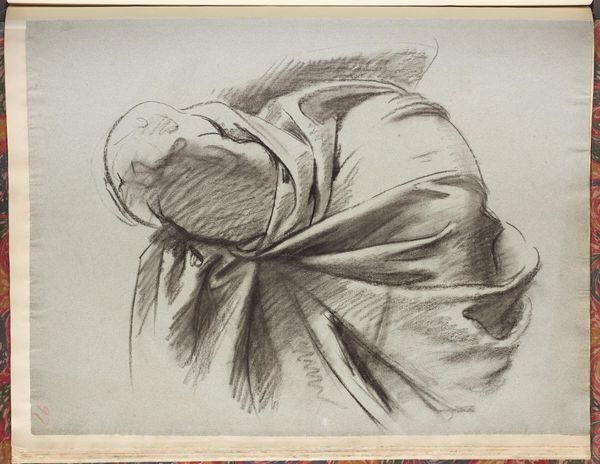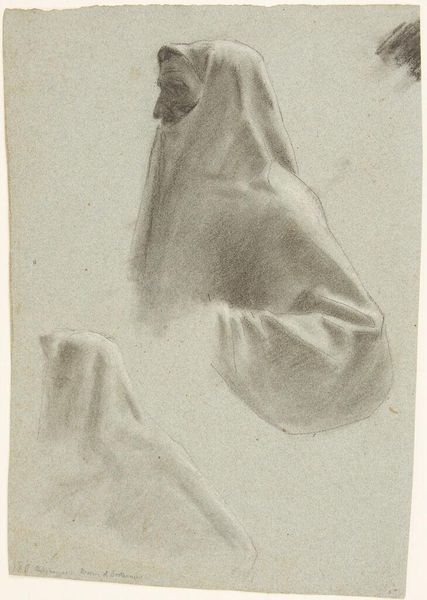
drawing, pencil
#
drawing
#
baroque
#
pencil sketch
#
pencil drawing
#
pencil
#
portrait drawing
#
history-painting
#
academic-art
Dimensions: width 323 mm, height 467 mm
Copyright: Rijks Museum: Open Domain
Editor: This drawing, "Anatomische studie van het achterhoofd," or Anatomical Study of the Back of the Head, was created around 1685 by Pieter van Gunst and is now held at the Rijksmuseum. It's rendered in pencil, and frankly, it’s quite unsettling to look at. It's so clinically detailed, almost macabre. How do we even begin to contextualize a piece like this? Curator: The visceral reaction you're experiencing is understandable. Anatomical drawings like these gained prominence during the Baroque period, fueled by the rise of scientific inquiry. However, it's crucial to understand their public function within artistic academies and the burgeoning field of medicine. These drawings weren't simply medical illustrations; they were often displayed publicly to showcase knowledge, control, and even power over the human body. How do you think the average viewer might have responded to this image in the 17th century, compared to a medical professional? Editor: Well, for someone without medical knowledge, it might be interpreted more symbolically, perhaps a reminder of mortality, or the fragility of the human form. Curator: Precisely. The politics of imagery comes into play. While the scientific community might appreciate the detail, for a broader audience, it reinforced ideas about the body and its place in society. Consider how the visual language – the precise lines, the dramatic lighting – echoes the visual rhetoric used to depict authority and social hierarchy. This intertwining of art, science, and power defined much of the Baroque era’s cultural landscape. Do you notice anything else that tells you this is also made as art? Editor: Yes, the inclusion of the drapery makes me think it is more of a still-life than just an anatomical sketch. Curator: Exactly! So how has your perception of this piece shifted after this conversation? Editor: I definitely see how it goes beyond just pure anatomical study. The historical and social context reveals so much about its intended purpose and audience. It’s about power, knowledge, and representation, all wrapped up in one intense image.
Comments
No comments
Be the first to comment and join the conversation on the ultimate creative platform.

